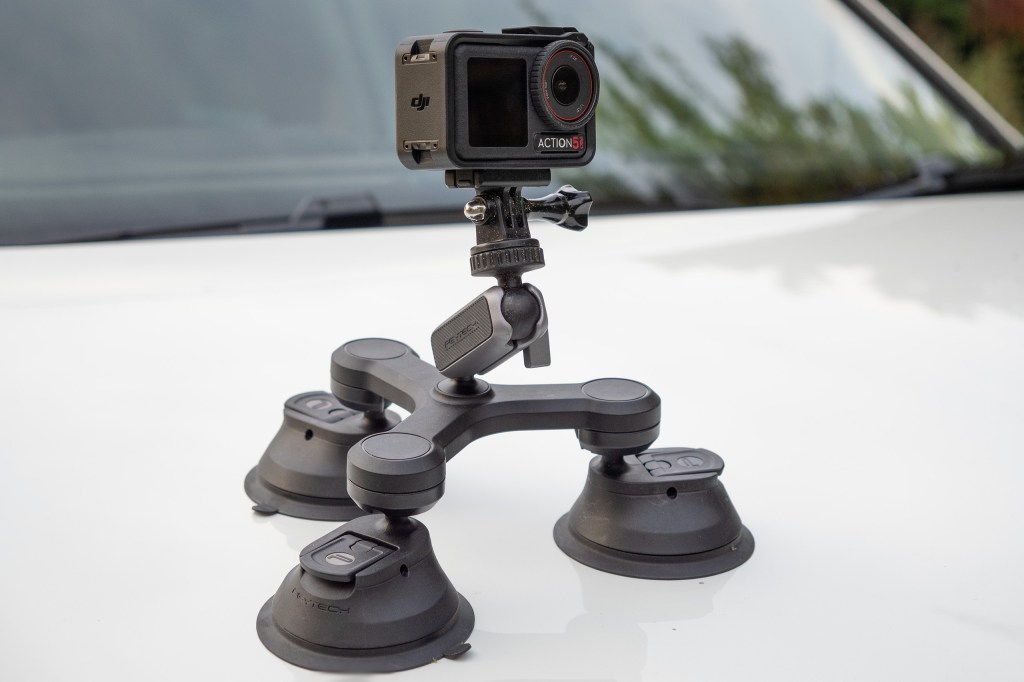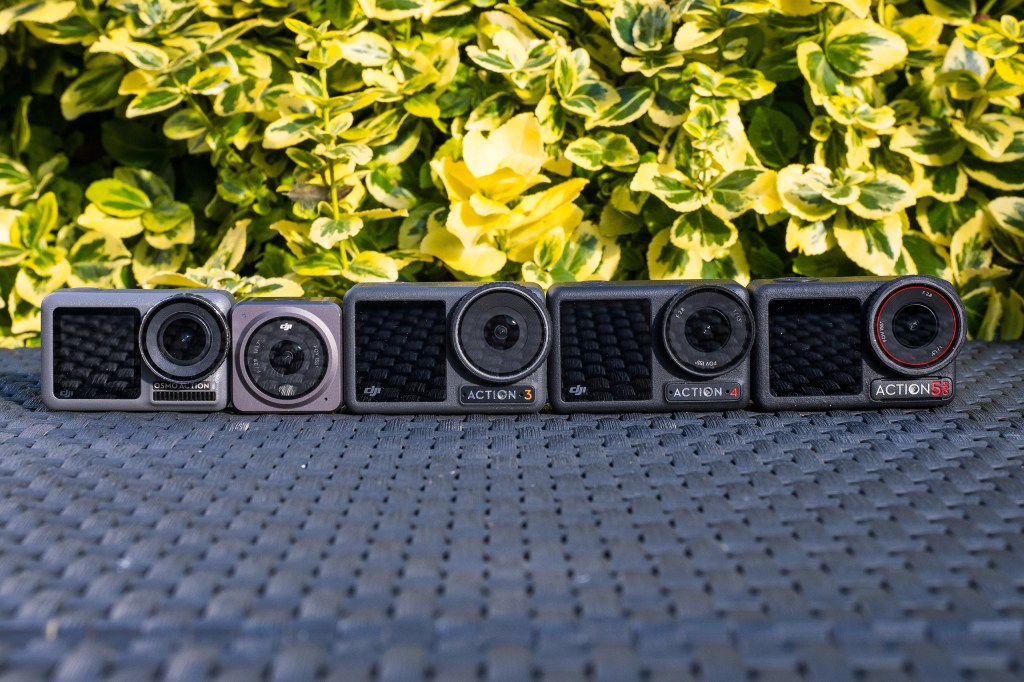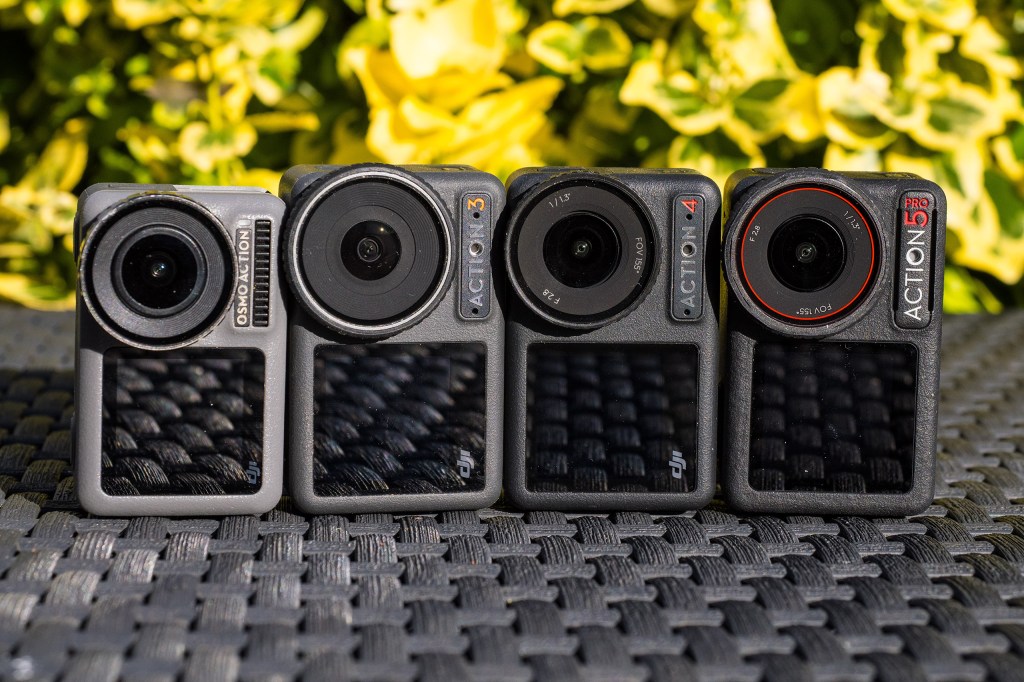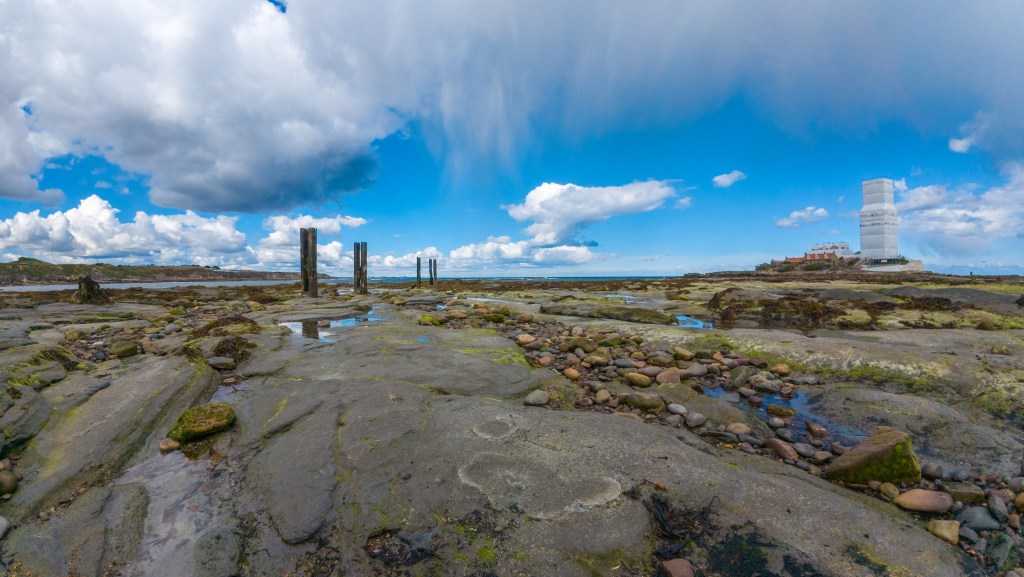Amateur Photographer verdict
The DJI Osmo Action 5 Pro makes a noticeable improvement in video quality to become the optimum choice for action video.- 47GB internal storage
- Connects to DJI Mic 2
- Improved video
- Increased stills resolution
- No 5.7K
- Limited lens accessories
DJI is expected to release an updated version of this imminently, now that this Osmo Action 5 Pro is a year old. As action cameras go, we love this model and expect it to be available for less once it is no longer the latest version – so keep your eyes open for offers to follow. Action camera fanatic, Matty Graham, discovers if the performance and features of this version live up to its grand “Pro” billing.
Most content creators out there know all about DJI’s action cameras. After all, this is the fifth iteration from the brands popular Osmo Action range that took the fight to GoPro, among other contenders in the sector, such as Insta360.
2023 saw DJI take a big step forward with the Osmo Action 4, swapping out a 1/1.7-inch sensor in favour of a larger 1/1.3-inch version, which resulted in a big leap forward in video quality, particularly in low light conditions.
At a glance – DJI OSMO Action 5
- 40MP 1/1.3 inch sensor
- Waterproof depth: 20 metres (without case)
- Screens: Dual OLED High-Brightness touchscreens
- Stills Resolution: 40-megapixel
- Max video resolution: 4K
- Operating time: 240 minutes
- Internal storage: 47GB
- Built-in pressure gauge: Yes
- $349 / £276 Standard combo, $449 / £339 Adventure combo

For full disclosure, I’m a big action camera fan, owning models from GoPro, Insta360 and every iteration released by DJI – from the original, right up to this latest model. I use them predominantly for filming automotive content, bolting the action cameras onto the side of tracking cars because, let’s face it, using a five grand cinema camera at those speeds would be reckless!
But action cameras have grown to record extreme sports, and content creators now employ them in a multitude of applications from vlogging to B-cameras.
Features – If it ain’t broke…
The Osmo Action series has proved popular for a simple reason; it works and works damn well, giving content creators a small, lightweight camera that is supremely rugged and easy to use.
DJI aficionados will point out that the Action 2 deviated from this form factor with its modular design, but we’ll park that for a moment as we explain that the body is pretty much the same as the Action 4, bar a few changes.
Firstly, weather sealing has been improved. Undo the battery compartment latch and feel the sealing area for signs of this. The real proof is that the Action 5 can dive deeper underwater without the need of a waterproof case (20 metres compared to 18 on the Action 4). This will appeal to scuba shooters who want to record their dives.
What’s more a new built-in pressure gauge displays both depth and altitude data, further exciting adrenaline junkies out there who want to record their adventures.
Operating time is also up to 240 minutes from 160 minutes on the older Action 4; that’s a big jump that will make a serious difference out in the field.
But for the most part, the form is the same, with the buttons and latches in the same place.
Be aware though that, with an ever so slightly more pronounced Rec button on the top plate, some third-party cages (like my PGYTECH case) will not fit the new Action 5.
The batteries of the DJI Osmo Action 3 and 4 are compatible with the Action 5 – good news if you have one of those – although the Action 5 Pro ships with batteries that boast extra capacity (1950mAh compared to 1770mAh) and the package includes DJI’s clever charge case so that up to three batteries can be charged at once.
The field of view is the same at 155-degrees and features the same f/2.8 maximum aperture, although the physical diameter of the lens area is slightly larger. This is unwelcome for those, like myself, who have invested in additional CPL or ND filter accessories.
Features continued – Same but different
The Action 5 features a 1/1.3-inch sensor; the same size as in the Action 4. This will disappoint those who had their hearts set on a 1-inch sensor. However, despite being the same size, DJI says the sensor inside the Action 5 is an all-new version which unlocks new features for greater tolerance when colour grading footage.
Carried over from the Action 4 is 10-bit D-Log, but all-new for the Action 5 is the introduction of an HLG profile.
Video resolutions are the same with 4K capture at 60p or 120p in case you wish to use that footage for a slow motion sequence and, with the Action 5, 4K 120p can be shot in the 4:3 format.
DJI claims the new sensor returns a Dynamic Range of up to 13.5-stops. There’s also a night mode to film in low light conditions.
To truly discover a lot of the newer features, your best bet is to sit down and just work your way through, navigating through the settings and trying out each mode. Some come with compromises; for example, the new Subject Detection mode works only up to 2.7K, which is frustrating, but this is countered by how scarily well it identifies subjects in the frame and is a great option for those vlogging with the Action 5.
Present still are the Rocksteady and Rocksteady+ stabilisation modes, which work well, but still come second to the stabilisation offered by the gimbal-stabilised Osmo Pocket 3. When it comes to Vloggers, choosing between the two models will be a tricky task.
This dilemma is made even harder by the fact that the Action 5 offers connectivity support to dual DJI mics, so you can use the brilliant DJI Mic 2 system to record interviews and this again will be a massive plus for Vloggers.
Also new with the Action 5 is 47GB of internal storage – super handy if you have forgotten a Micro SD card or you simply need emergency space to save your content.
Performance – Beefy stills, better video
While the Action 4 was a great camera for videographers, it left those shooting stills a little cold as the cam could only capture 12-megapixels stills (JPEGs/RAWs).
The Action 5 takes a giant leap forward in this regard, as it can now capture 40-megapixels JPEGs or RAW. This translates to a jump in max pixel size from 4000 x 2256 pixels on the Action 4 to 7296 x 5472 pixels on the Action 5. That’s almost double the pixel size of the Action 4 and will mean you can crop in on frames to adjust the compensation without overly compromising image quality.
Better still, I found that when editing the RAW stills files in Lightroom, the frames had a lot of tolerance and flexibility to recover Highlights, boost shadows and generally push the pixels harder to suit your vision of the frame.
So here’s the big question; is the video footage better? And the answer is undoubtedly yes. I tested the Action 5 against the Action 4 in a range of different scenes with varying lighting conditions – from bright blue skies to low light dusk.
I have to say, viewing the footage side by side, the Action 5 seems noticeably brighter, crisper and simply more pleasing to the eye. My preference is to film with the HLG profile, but I’m not disappointed by the 10-bit D-Log footage either and all profiles are capable of returning pro-looking footage that can be edited and further graded on software such as Premiere Pro.
To push the look of the footage further, I would have liked to see some additional accessories that users of the new GoPro Hero 13 Black can take advantage of, such as the Macro and Anamorphic modular filters. You can view high-speed video here.
Verdict
As a long-time DJI user who owns every single version of the Osmo Action, I can honestly say the Action 5 is a worthy development of a tried and tested system. The improvements may not be headline-grabbing but will make a difference out in the field and to the overall quality of your footage.
The lack of 5.7K is a shame, but 4K is more than enough for most and does offer advantages in terms of storage space and balancing the burden when editing on your computer.
In reality though, the biggest rival for the Action 5 isn’t GoPro, but the brand’s own Osmo Pocket 3. For vlogging, I would still prefer to shoot with the physical gimbal offered by the Pocket, rather than the electronic stabilisation from the Action 5. That said, if there is ANY chance your filming in wet or dangerous conditions then the Action 5 is the no-brainer choice.













